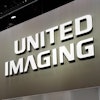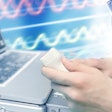NEW YORK CITY - A new dual-frequency nonlinear imaging mode called differential tissue harmonic imaging (DTHI) offers improvements over tissue harmonic imaging (THI) and fundamental ultrasound for hepatic applications, according to research from Thomas Jefferson University (TJU) in Philadelphia and Taipei Veterans General Hospital in Taipei, Taiwan.
"DTHI provided improved detail resolution and image quality compared to THI," said Dr. Flemming Forsberg of TJU. He presented the team's research Friday at the American Institute of Ultrasound in Medicine (AIUM) meeting.
To compare the three modes for depicting normal and abnormal livers, the research team studied five normal volunteers and 20 patients scheduled for RF ablation of liver lesions on an Aplio scanner (Toshiba America Medical Systems, Tustin, CA) using a 3.5-MHz curvilinear-array transducer.
Sequential imaging was performed in all three modes, and dynamic range, focal zone, and depth were kept constant in all three techniques. Time gain compensation (TGC) and overall gain varied for each mode, however, Forsberg said. Right and left liver lobes were imaged in both the sagittal and transverse planes, as were liver lesions.
The researchers also performed in vitro testing, testing lateral resolution for the techniques using a phantom (ATS Labs, Bridgeport, CT).
For in vivo studies, three blinded and independent readers scored the randomized images for noise, detail, image quality, and lesion margins on a seven-point scale. They asked the readers to rate the image quality of each of the three modes from 1 to 3 (best to worst). The results were then compared using Wilcoxon's sign rank test.
For quantitative measurements, three blinded and independent readers assessed the penetration depth in centimeters. For the lesions, the contrast-to-noise ratio (CNR) was calculated and averaged over two regions of interest, he said. Results were then compared using paired t-tests.
For the in vitro tests, DTHI's lateral resolution was statistically significantly smaller than regular ultrasound (difference of 0.44, p = 0.009), and showed a trend toward significance when compared with THI (difference of 0.38, p = 0.06), according to Forsberg. In addition, DTHI performed better than both modes in the far field (p < 0.04).
As for the in vivo testing, conventional ultrasound performed worse than both THI and DTHI (p < 0.002). DTHI scored significantly better than THI for detail resolution and image quality (p < 0.0005), but no differences were found for other parameters, Forsberg said.
"Even though in individual image pairs you may not think there's a big difference (between DHTI and THI), when you really start looking at a large dataset, blinded, these subtle differences really come off and seem to make a difference in our scores," he said.
In quantitative measurements, the researchers found THI and DTHI to add an average increase in penetration of approximately 6 mm compared with regular ultrasound (p < 0.0001). A trend toward significance (p = 0.06) was seen in comparing CNR between DTHI (3.5) and THI (2.9), according to Forsberg.
And in side-by-side comparisons using the 1-3 point scale, the readers rated DTHI higher (1.56) than THI (1.71) and regular ultrasound (2.73). The difference was statistically significant (p < 0.007).
By Erik L. RidleyAuntMinnie.com staff writer
March 16, 2007
Related Reading
Ultrasound continues to make inroads in breast imaging, February 6, 2007
CEUS aids differentiation of small liver lesions, April 3, 2006
Detection of liver metastases with contrast-enhanced ultrasound, March 23, 2006
Contrast-enhanced US useful for differentiating focal liver lesions, January 19, 2006
Copyright © 2007 AuntMinnie.com




















